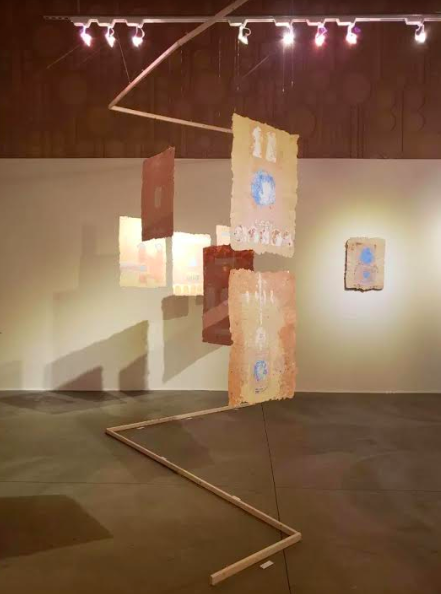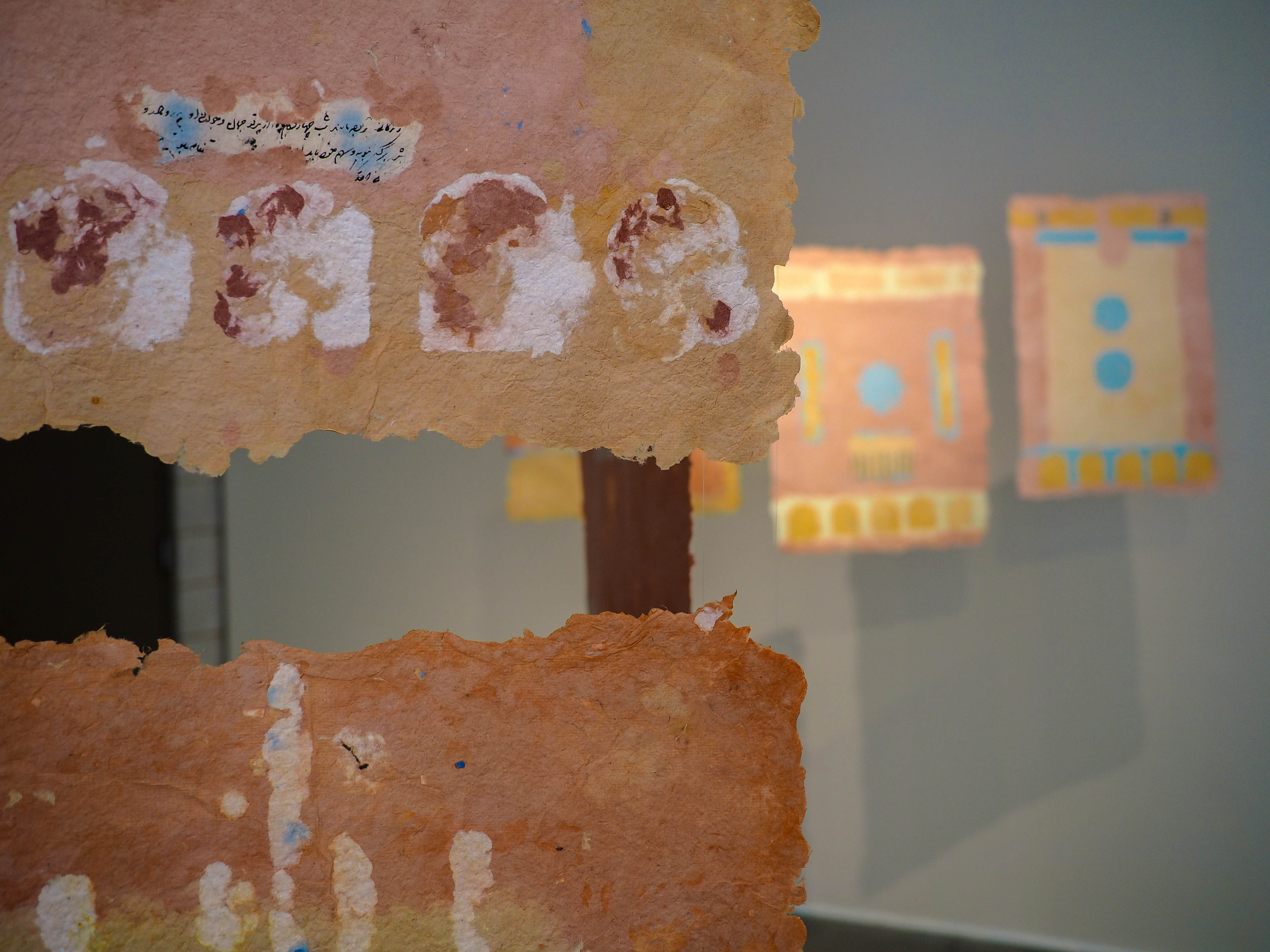Space is a longtime preoccupation with the Iranian artist Yasaman Moussavi, whose recent show, Intervals was on display at the Beverly Art Center from Jan 3 to Feb 2, 2020. In Moussavi’s Intervals, space is mediated through two parallel operations of marking and organizing. By marking I mean a primeval enactment of space through play and its subsequent punctuation through psychic and cultural investment. Organizing, on the other hand, is less about compartmentalization than about space as the locus of social cooperation.
Intervals consists of three parts: suspended large handmade papers installed along a zig-zag path, a bird’s eye view upon an urban landscape created by molded papers, and a collection of tiny cubicle paper modules carefully selected and framed in a fashion reminiscent of butterfly specimens. Hanged by thin transparent wires, the papers with the bulky, rough surfaces manifest a thrust, a longing for defying gravity. However, such an urge for the heavens does not manifest a perfect balance but a fragile union of materiality and spirituality. Likewise, the framed paper modules—despite all their beauty—express tragedy by laying bare the fragments of invisible space through their vulnerable, tiny bodies entrapped within their isolating picture frames. Ironically, they are set free only in the floating organization of the urban bird’s eye view installation on the exhibition entrance wall.

Intervals is a metamorphosis of the gallery space into a place for mediation on spatial organization, existence, and experience. What is at stake, for Moussavi, is to overcome the rigidity of walls through movements and transitions that enable the viewers to (re-)discover the interstices between places, to experience the intervals so to speak. “If place is a pause,” Moussavi says, “then, space is a movement.” Such an emphasis on movement incorporates temporality. Indeed, Moussavi so much like a musician amuses herself with intervals. She draws parallels between interval spaces and the courtyards in the traditional Persian architecture and seeks to harness their potential for liberating. For Moussavi, both marking and organizing operations meet at the courtyards as a space of convivial gatherings as well as a liminal space of inclusivity that facilitating the transition between halls and private rooms that usually remain exclusive to the certain members of the family.

Intervals ended with a performance, titled “4,656 + 1 & 176,” on February 2, 2020, in which Moussavi collaborated with the Chicago-based artist Megan Tatiana Convey Gómez. Commemorating the victims of Hurricane Maria (Sept. 2017) and the victims of the Ukrainian passenger plane shot down in Iran (Jan. 2020), the artists simultaneously performed Sun Salutations, a Yoga sequence, as an act of mourning. Prior to the performance, Gómez installed an altar—a small table with the black tablecloth, a candle, a glass cup of water from Lake Michigan, Himalayan salt, bay leaves, a small flag of Puerto Rico and 176 screenprints, which then, were distributed to the audience after the exhibition—symbolizing the two countries. For hours of the performance, the artists enacted the transformation of the exhibition space into a site of mourning and a place for solidarity to transcend geographic, racial, and spatial boundaries.
Featured Image: Photo by Kaveh Rafie. Detail of handmade papers. The artist embedded the fragments of the family letters in which her great-grandparent wrote on family bonds and the emotional distress of traveling far from his hometown. This shot is at an angle where one piece is in the forefront and several pieces rest of a wall of the exhibition space. The piece in the forefront features small handwritten text on paper while two pieces hang on the right side in the distance.

Kaveh Rafie is a Ph.D. candidate in Art History at the University of Illinois at Chicago. His research interest focuses on the social underpinning of artistic and technoscientific practices since 1900. He is currently working on Iranian modernism during the second half of the twentieth century.



